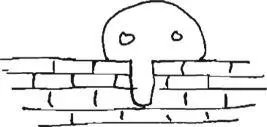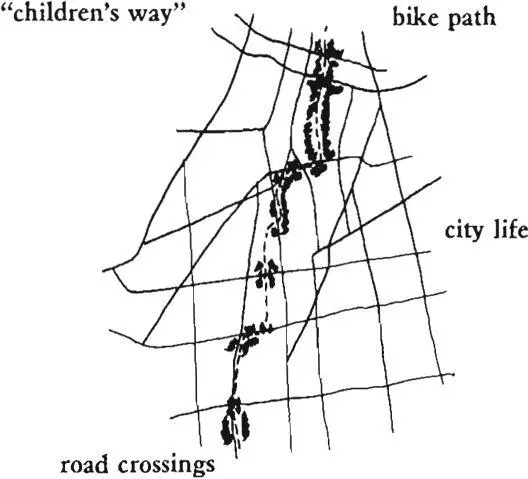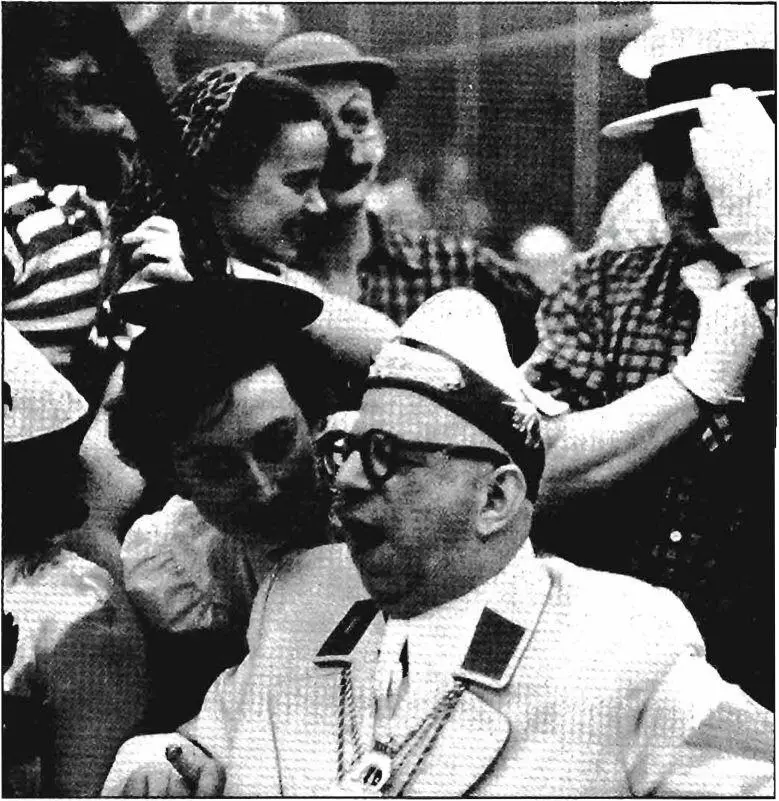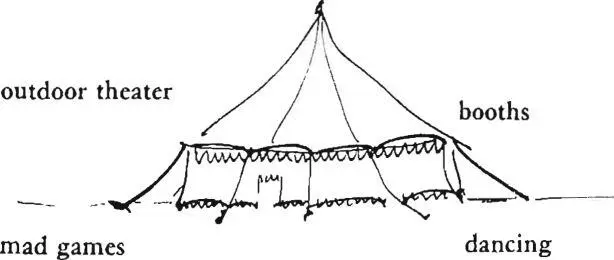Christopher alexander - A pattern language
Здесь есть возможность читать онлайн «Christopher alexander - A pattern language» весь текст электронной книги совершенно бесплатно (целиком полную версию без сокращений). В некоторых случаях можно слушать аудио, скачать через торрент в формате fb2 и присутствует краткое содержание. Жанр: Прочая научная литература, на английском языке. Описание произведения, (предисловие) а так же отзывы посетителей доступны на портале библиотеки ЛибКат.
- Название:A pattern language
- Автор:
- Жанр:
- Год:неизвестен
- ISBN:нет данных
- Рейтинг книги:3 / 5. Голосов: 1
-
Избранное:Добавить в избранное
- Отзывы:
-
Ваша оценка:
- 60
- 1
- 2
- 3
- 4
- 5
A pattern language: краткое содержание, описание и аннотация
Предлагаем к чтению аннотацию, описание, краткое содержание или предисловие (зависит от того, что написал сам автор книги «A pattern language»). Если вы не нашли необходимую информацию о книге — напишите в комментариях, мы постараемся отыскать её.
A pattern language — читать онлайн бесплатно полную книгу (весь текст) целиком
Ниже представлен текст книги, разбитый по страницам. Система сохранения места последней прочитанной страницы, позволяет с удобством читать онлайн бесплатно книгу «A pattern language», без необходимости каждый раз заново искать на чём Вы остановились. Поставьте закладку, и сможете в любой момент перейти на страницу, на которой закончили чтение.
Интервал:
Закладка:
We imagine a carefully developed childrens’ bicycle path, within the larger network of bike paths. The path goes past and through interesting parts of the city; and it is relatively safe. It is part of the overall system and therefore used by everyone. It is not a special children’s “ride”—which would immediately be shunned by the adventurous young—but it does have a special name, and perhaps it is specially colored.
 |
| Ysu MuJr Sc K-tD}>//Vfc- |
The path is always a bike path; it never runs beside cars. Where it crosses traffic there are lights or bridges. There are many homes and shops along the path—adults are nearby, especially the old enjoy spending an hour a day sitting along this path, themselves riding along the loop, watching the kids out of the corner of one eye.
And most important, the great beauty of this path is that it passes along and even through those functions and parts of a town which are normally out of reach: the place where newspapers are printed, the place where milk arrives from the countryside and is bottled, the pier, the garage where people make doors and windows, the alley behind restaurant row, the cemetery.
Therefore:
As part of the network of bike paths, develop one system of paths that is extra safe—entirely separate from automo-
295
SUMMARY OF THE LANGUAGE
235. SOFT INSIDE WALLS
236. WINDOWS WHICH OPEN WIDE
237. SOLID DOORS WITH GLASS
238. FILTERED LIGHT
239. SMALL PANES
240. HALF-INCH TRIM
build outdoor details to finish the outdoors as fully as the indoor spaces;
241. SEAT SPOTS
242 . FRONT DOOR BENCH
243. SITTING WALL
244. CANVAS ROOFS
245. RAISED FLOWERS
246. CLIMBING PLANTS
247. PAVING WITH CRACKS BETWEEN THE STONES
248. SOFT TILE AND BRICK
complete the building with ornament and light and color and your own things;
249. ORNAMENT
250. WARM COLORS
251 . DIFFERENT CHAIRS
252 . POOLS OF LIGHT
253. THINGS FROM YOUR LIFE
XXXIV
biles, with lights and bridges at the crossings, with homes and shops along it, so that there are always many eyes on the path. Let this path go through every neighborhood, so that children can get onto it without crossing a main road. And run the path all through the city, down pedestrian streets, through workshops, assembly plants, warehouses, interchanges, print houses, bakeries, all the interesting “invisible” life of a town—so that the children can roam freely on their bikes and trikes.

Line the children’s path with windows, especially from rooms that are in frequent use, so that the eyes upon the street make it safe for the children—street windows (164); make it touch the children’s places all along the path—connected play (68), ADVENTURE PLAYGROUND (73), SHOPFRONT SCHOOLS (85), children’s home (86), but also make it touch other phases of the life cycle—old people everywhere (40), work community (41), UNIVERSITY AS A MARKETPLACE (43), GRAVE SITES (70), LOCAL SPORTS (72), ANIMALS (74), TEENAGE SOCIETY
(84). . . .
296
in the communities and neighborhoods provide pub lie open land where people can relax >rub shoulders and renew themselves;
| CO | CARNIVAL |
| 59- | QUIET BACKS |
| 60. | ACCESSIBLE GREEN |
| 61. | SMALL PUBLIC SQUARES |
| 62. | HIGH PLACES |
| 63> | DANCING IN THE STREET |
| 64. | POOLS AND STREAMS |
| 65. | BIRTH PLACES |
| 66. | HOLY GROUND |
297
| 58 CARNIVAL |
|---|
 |
298
. . . once in a while, in a subculture which is particularly open to it, a promenade may break into a wilder rhythm— promenade(31), night i.ife(33)—and perhaps every promenade may have a touch of this.
Just as an individual person dreams fantastic happenings to release the inner forces which cannot be encompassed by ordinary events, so too a city needs its dreams.
Under normal circumstances, in today’s world the entertainments which are available are either healthy and harmless—going to the movies, watching TV, cycling, playing tennis, taking helicopter rides, going for walks, watching football—or downright sick and socially destructive—shooting heroin, driving recklessly, group violence.
But man has a great need for mad, subconscious processes to come into play, without unleashing them to such an extent that they become socially destructive. There is, in short, a need for socially sanctioned activities which are the social, outward equivalents of dreaming.
In primitive societies this kind of process was provided by the rites, witch doctors, shamans. In Western civilization during the last three or four hundred years, the closest available source of this outward acknowledgment of underground life has been the circus, fairs, and carnivals. In the middle ages, the market place itself had a good deal of this kind of atmosphere.
Today, on the whole, this kind of experience is gone. The circuses and the carnivals are drying up. But the need persists. In the Bay Area, the annual Renaissance Fair goes a little way to meet the need—but it is much too bland. We imagine something more along the following lines: street theater, clowns, mad games in the streets and squares and houses; during certain weeks, people may live in the carnival; simple food and shelter are free; day and night people mixing; actors who mingle with the crowd and involve you, willy nilly, in processes whose end cannot be
TOWNS
foreseen; fighting—two men with bags on a slippery log, in front of hundreds; Fellini—clowns, death, crazy people, brought into mesh.
Remember the hunchbacked dwarf in Ship of Fools , the only reasonable person on the ship, who says “Everyone has a problem; but I have the good fortune to wear mine on my back, where everyone can see it.”
Therefore:
Set aside some part of the town as a carnival—mad sideshows, tournaments, acts, displays, competitions, dancing, music, street theater, clowns, transvestites, freak events, which allow people to reveal their madness; weave a wide pedestrian street through this area; run booths along the street, narrow alleys; at one end an outdoor theater; perhaps connect the theater stage directly to the carnival street, so the two spill into and feed one another.

Dancing in the street, food stands, an outdoor room or two, a square where the theater is, and tents and canvas will all help to make it even livelier— small public squares (6 i ), dancing in THE STREET(63), PUBLIC OUTDOOR ROOM(69), FOOD STANDS(93), PEDESTRIAN STREET(lOO), CANVAS ROOFS (244.). . . .
Читать дальшеИнтервал:
Закладка:
Похожие книги на «A pattern language»
Представляем Вашему вниманию похожие книги на «A pattern language» списком для выбора. Мы отобрали схожую по названию и смыслу литературу в надежде предоставить читателям больше вариантов отыскать новые, интересные, ещё непрочитанные произведения.
Обсуждение, отзывы о книге «A pattern language» и просто собственные мнения читателей. Оставьте ваши комментарии, напишите, что Вы думаете о произведении, его смысле или главных героях. Укажите что конкретно понравилось, а что нет, и почему Вы так считаете.












